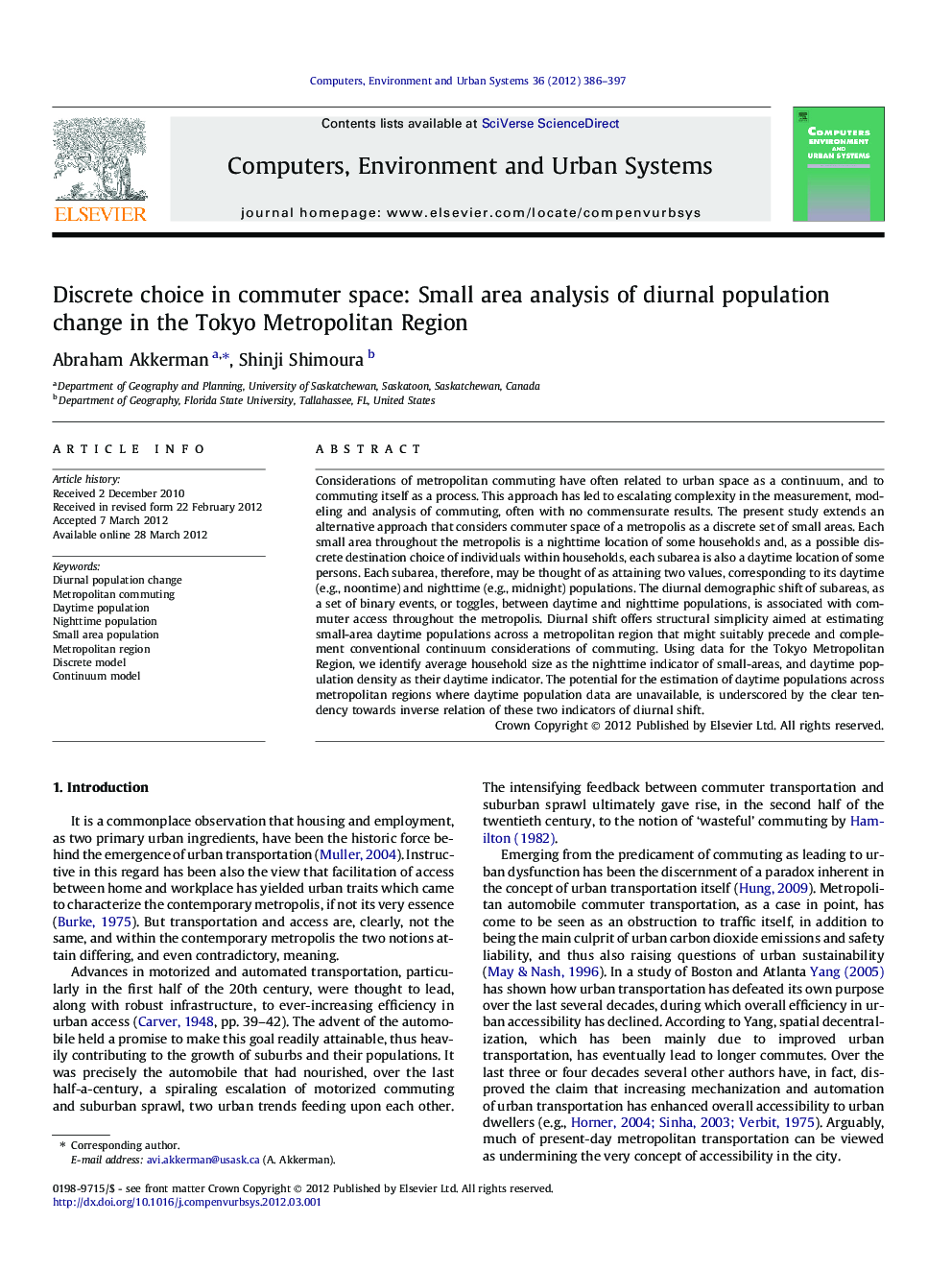| Article ID | Journal | Published Year | Pages | File Type |
|---|---|---|---|---|
| 506416 | Computers, Environment and Urban Systems | 2012 | 12 Pages |
Considerations of metropolitan commuting have often related to urban space as a continuum, and to commuting itself as a process. This approach has led to escalating complexity in the measurement, modeling and analysis of commuting, often with no commensurate results. The present study extends an alternative approach that considers commuter space of a metropolis as a discrete set of small areas. Each small area throughout the metropolis is a nighttime location of some households and, as a possible discrete destination choice of individuals within households, each subarea is also a daytime location of some persons. Each subarea, therefore, may be thought of as attaining two values, corresponding to its daytime (e.g., noontime) and nighttime (e.g., midnight) populations. The diurnal demographic shift of subareas, as a set of binary events, or toggles, between daytime and nighttime populations, is associated with commuter access throughout the metropolis. Diurnal shift offers structural simplicity aimed at estimating small-area daytime populations across a metropolitan region that might suitably precede and complement conventional continuum considerations of commuting. Using data for the Tokyo Metropolitan Region, we identify average household size as the nighttime indicator of small-areas, and daytime population density as their daytime indicator. The potential for the estimation of daytime populations across metropolitan regions where daytime population data are unavailable, is underscored by the clear tendency towards inverse relation of these two indicators of diurnal shift.
► Problem of estimating small-area daytime populations throughout a metropolis is addressed in relation to commuter access. ► Conjectured is a binary, toggle association between parameters of daytime and nighttime populations. ► This reveals statistical relationship between the two sets of parameters, thus allowing for estimates of daytime populations. ► These, in turn, are related to commuter access between the small areas.
